MusicRadar Verdict
Ample is more than generously sufficient in the fun stakes. A veritable playground of vintage synthesis and exploration.
Pros
- +
Vintage-style sequencer and patch pin matrix.
- +
Percussive elements add an extra dimension.
- +
An all-analogue love letter to the golden era of synths.
Cons
- -
Patch pins are small enough to lose very easily and quite expensive to replace.
- -
The premium price point might put off some folks.
MusicRadar's got your back
Analogue Solutions Ample: What is it?
For a long time, Analogue Solutions’ synth output mostly consisted of the desktop variety, with now discontinued models such as Polymath, Telemark and Vostok giving way to the newer Fusebox X and Impulse Command. All of these can pride themselves on their pure-analogue signal paths (barring some post-effect circuitry) and a heavy nod to what is often referred to as the golden age of synthesis: the sounds of the ’70s.
However, Tom Carpenter’s output of late has certainly switched gears in the size stakes. While the all-analogue sensibilities are unwavering, the newer Colossus and Maximus wear their monickers well. These behemoths are definitely once-in-a-lifetime type synths. So it’s with this latest desktop instrument that we see those aspirations brought back to earth with Ample, a desktop synth that comes with some of the best bits from AS’s back catalogue thrown into one.
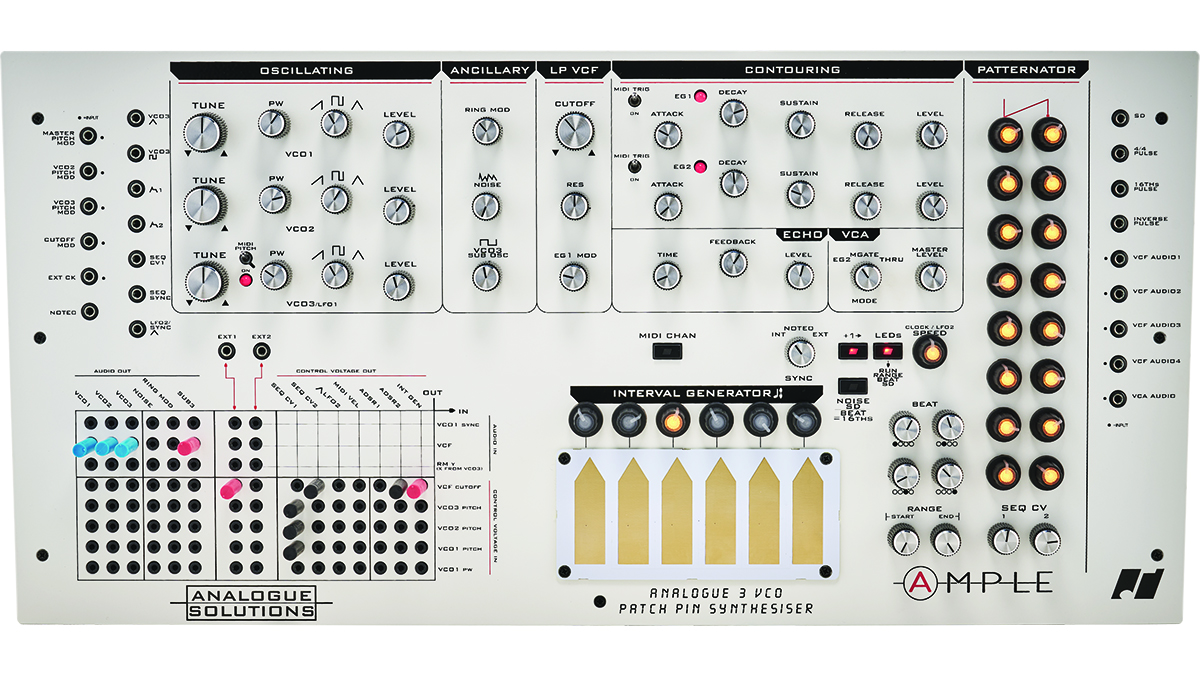
Analogue Solutions Ample: Performance and verdict
Ample consists of three VCOs, each with saw, triangle and square waveshapes, pulse-width modulation and the third oscillator can double as a second LFO. Controls for the ring modulator, noise generator and sub-oscillator level live within the Ancillary section, swiftly followed by the Filter section, home to a four-pole low-pass filter with the usual cutoff, resonance and envelope generator modulation controls.

• Erica Synths Syntrx II
You want a patch matrix and a joystick?! Look no further than this reimagining of the EMS Synthi. No physical pins, but at least you won’t have any to lose.
• Moog DFAM
Ample bears a similar sequencer and percussive chime to Moog’s Drummer From Another Mother. They’re not entirely comparable in the specs or price stakes, but if two machines were ever destined to play well together...
• Intellijel Cascadia
Cascadia doesn’t lean as much toward the percussive as Ample, but here you get as much patchability to fully explore and get lost in East and West Coast sound. At a similar price, too.
All of which moves us neatly to the Contouring section, home to two ADSR envelopes that sit atop the VCA and Echo sections, with the latter taking circuitry cues from the Dr Strangelove effects module. According to the site, the main sound elements come from Fusebox, but it’s not clear as to which parts so we’ll just have to take Mr Carpenter’s word for it. Controlling the sound is taken care of with the aid of the Pin Matrix, Patternator and Interval Generator.
Patternator is a 16-step sequencer with rotary control, from Analogue Solutions’ Generator sequencer, which was also home to the Interval Generator, and found here. As the name suggests, this six-button, touch-capacitive keypad generates six intervals that can be designated for pitch or modulation purposes. There’s also a snare drum noise generator and fixed-pattern CV pulses that you can potentially either send out to external gear or patch back into Ample.
One of Ample’s main USPs is the pin matrix, which let’s face it, is fun to have on any instrument, let alone a synth such as this. The blurb tells us that this is borrowed from the Vostok and on further inspection it doesn’t look like an exact copy, thankfully. Unlike the Vostok, Ample’s pin matrix is nowhere near as fiddly and is far easier to read. Probably down to the fact that the pins are slightly larger and fewer features are patched within the matrix. The audio out section of the matrix lets you route the three oscillators and three ancillary sources back into the VCO1 sync, VCF and Ring Mod. It’s in this section that you’ll want to start patching Ample as you’ll hear nothing until you plug in those oscs.
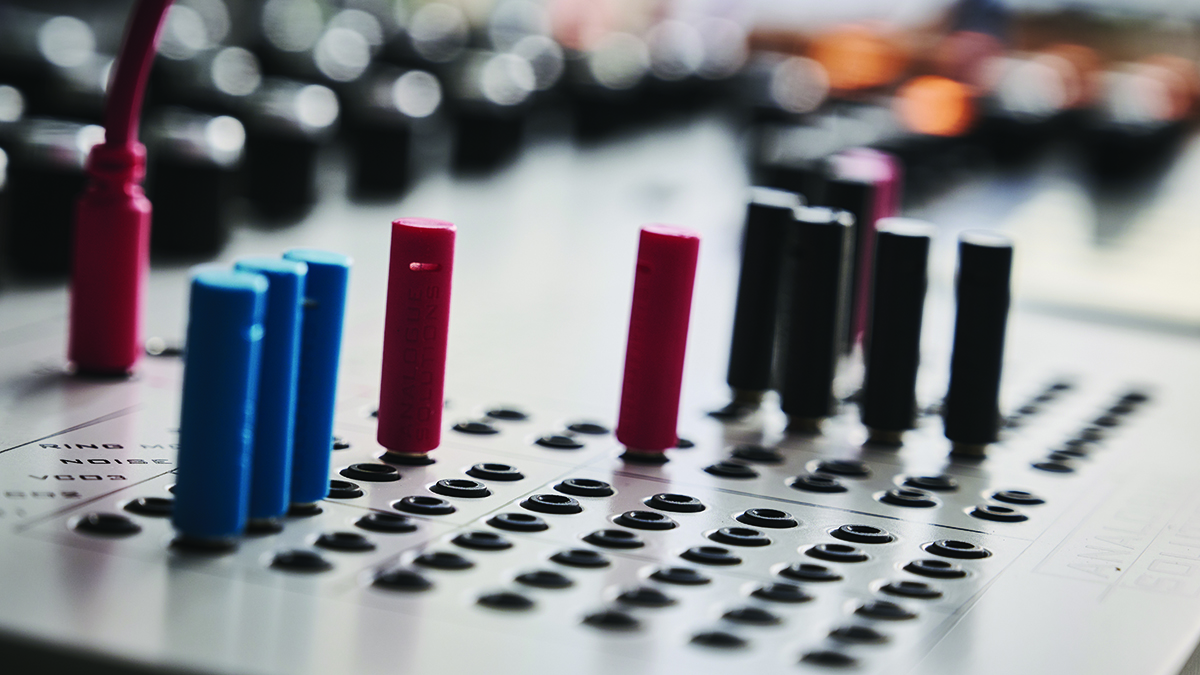
While we were first introduced to the Patternator with Generator (now discontinued), a sequencer that was available in both standalone desktop and Eurorack variants, anyone who’s had time with either will be in familiar territory here, or any vintage sequencer for that matter. In Ample we are treated to one and a half of Generator’s sequencing tracks and by that, we mean that you have a master sequence, up to 16 steps, and then a secondary sequence for the snare drum but the patterns will only be triggered if a step is selected within the main sequence.
Want all the hottest music and gear news, reviews, deals, features and more, direct to your inbox? Sign up here.
Pitch is controlled by the dials of Patternator whereas the steps themselves are triggered by using the four rotaries under the section called Beat. How Beat works is that the first dial selects steps 1, 5, 9 and 13; the second dial is for steps 2, 6, 10 and 14; the third for steps 3, 7… and so on. You get the picture. It’s an interesting approach that’s been explored in previous AS instruments and adds to the exploration factor here. At first, we found ourselves wanting to trigger the steps by simply pressing the encoders but getting more involved with Ample made us realise that the Beat controls are way more fun.
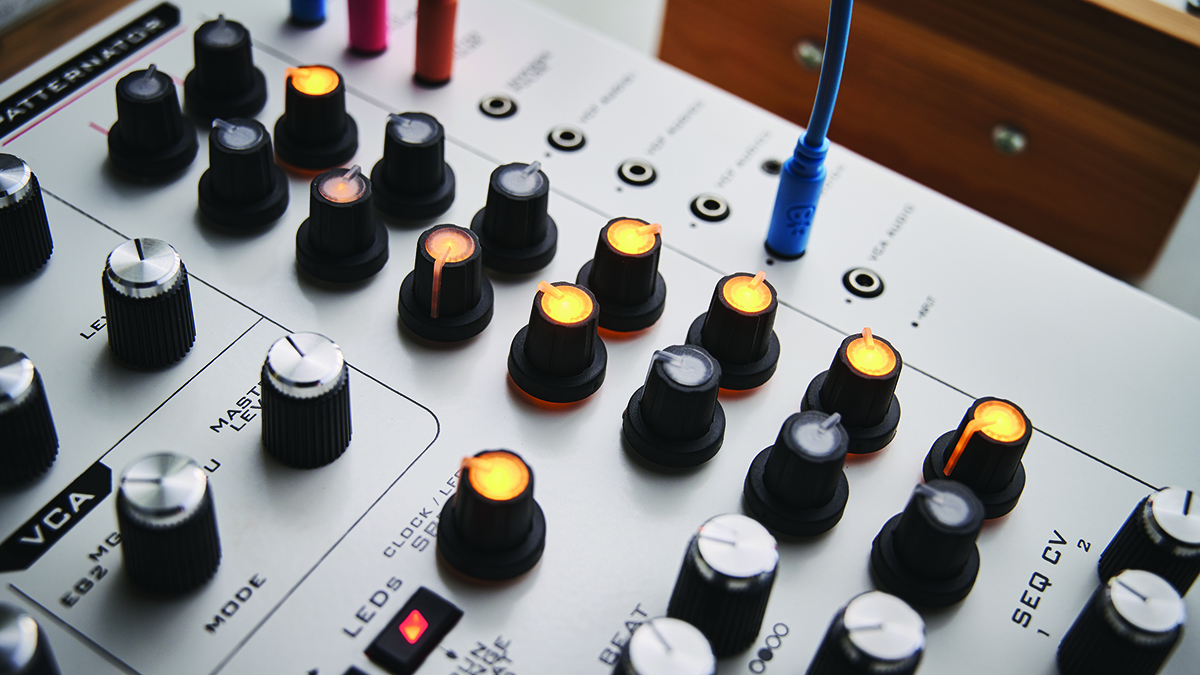
The Patternator has more than just pitch sequencing tricks up its sleeve and as such feels like the beating heart of Ample. There’s also the option to patch the sequencer into the filter cutoff, then combined with the two CV depth controls located just below the sequencer rotaries you can get some real movement into the patterns. This works well when playing around with the snare drum sequence, adding accents to more complex patterns.
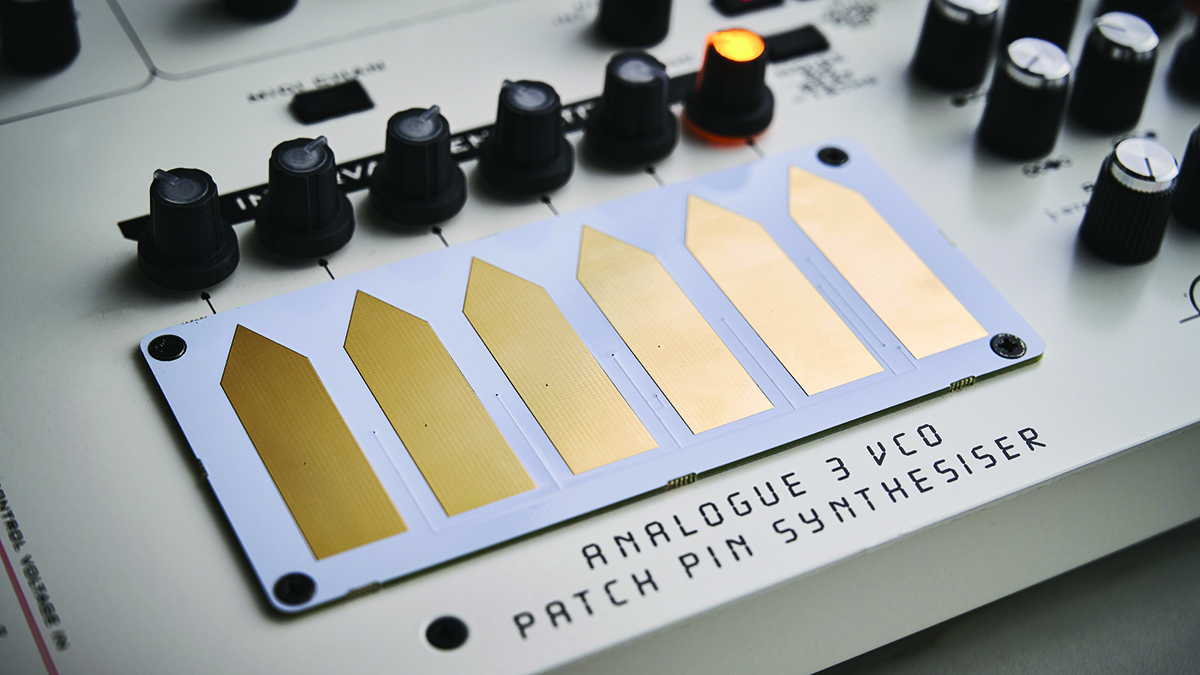
The keys to the kingdom
Along with the vintage stylings of the Patternator, another component borrowed from the original Generator sequencer is the Interval Generator. From here, you can assign six different voltages and patch them to all three oscillators and/or filter cutoff and pulse width for VCO1.
IG is the performance portion of Ample. Patching in the oscillators will give you the option to transpose the pitch of the sequence to be performed live. Note that these touch-capacitive keys are not triggers, so you won’t be able to play Ample as you would with a traditional keyboard. For that you’ll need to draft in the help of an external MIDI source. Dialling in pitches with the six rotaries isn’t the easiest and will take time to get right. One way to tame the amount of voltage outputted is to experiment with the different impedance of the patch pins. This will affect the range of voltage at your disposal. You can achieve such varying results by switching out the black (0 Ohms) for the red (10k Ohms) and blue (100k Ohms). Then there’s the option of pressing multiple keys at once, which further yields interesting results. It’s a real hands-on experience.
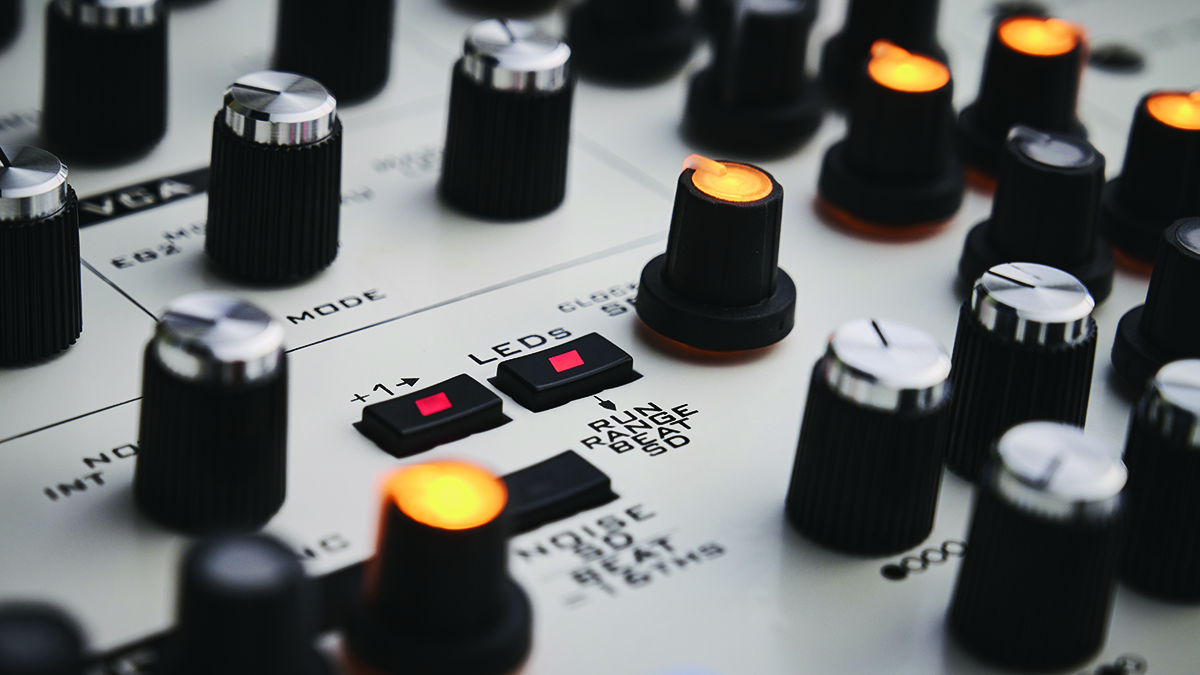
The snare drum (SD) and pulse outputs expand the sonic offerings of Ample. You can either patch the individual outputs back into the filter via the four VCF inputs or send them out and control other modules. Those four VCF inputs are a real boon and give you the option to route four external audio sources into the filter which can then be modulated by the sequencer. It’s certainly a great way to glue patterns together, further expanding the sonic palette.
While there’s plenty to like here, there are some (genuinely minor) notes. In its raw form, Ample is not the most ‘musical’ of instruments, it very much aligns itself to the esoteric percussive crowd. And while it’s great at that job (and more besides), we’d possibly switch out the Interval Generator for the keyboard from Colossus. Which is probably physically impossible due to the size, but for our tastes, having a little more control over the tonality would be preferable. There is a workaround for this but it will require some external gear, specifically a MIDI keyboard. Connecting your own MIDI keys to Ample will let you play the root note for the Patternator and trigger the onboard EGs to play Ample more traditionally.
Out of the box, there’s no physical manual or guide, which is annoying. A quick start guide would be a welcome addition here. There’s also a distinct lack of patch notes and ideas, despite it being an upcoming feature of the website. Not to say that blind exploration doesn’t come with, um… ample… rewards, but we think everyone would benefit from a helping hand.
Another minor gripe would be the threat of losing the patch pins. Keep these little guys safe. The website states that Ample only ships with 15 pins (although this unit came with nine of each colour). That’s five each in three different impedances (0, 10k and 100k Ohms) and as they’re 2.5mm, you’ll not find them elsewhere. A pack of 15 will set you back £35 from the AS site.

Verdict
Ample is not exactly an AS greatest hits package, but combining circuits from previous and mostly defunct instruments keeps them alive and it’s no doubt a great way to recycle existing componentry. But this isn’t some kind of disjointed Frankenstein synth, assembled for the hell of it. The right componentry has been clearly chosen to create a very cohesive instrument here. Ample sums up what we love about Analogue Solutions’ instruments: each has its own personality and shows off all that is good in all-analogue circuitry.
As soon as you patch those pins you instantly tap into a bygone era
In a nutshell, Ample is ace and reminds us that the ’70s was truly the golden era for synthesis. As soon as you fire it up and begin patching those pins, you instantly tap into a bygone era, wielding an EMS VCS3: it’s chock full of explorative inspiration. Here, you can keep your digitally controlled rigidity, there’s nothing but pure freewheeling analogue vibes (MIDI chip notwithstanding). That said, it’s anything but a model from yesteryear. The percussive elements combined with a vintage sequencing experience still feel bang up to date if that’s your bag – a good blend of old school/nu school if you will.
So whether you want to explore rhythms with the Patternator, Beat controls and patching the SD or Pulse outputs back into the filter, or just dimming the lights and switching up the VCA for an ambient drone marathon, Ample is truly a sonic wonderland.
MusicRadar verdict: Ample is more than generously sufficient in the fun stakes. A veritable playground of vintage synthesis and exploration.
Analogue Solutions Ample: The web says
"A pretty versatile synthesizer with incredible possibilities. It’s a real treasure trove for simple but also quite complex sounds."
gearnews.com
Analogue Solutions Ample: Hands-on demos
Analogue Solutions
Starsky Carr
Michael Manning
Analogue Solutions Ample: Specifications
- KEY FEATURES: All-analogue signal path with elements from Analogue Solutions’ illustrious past including 3x VCO; 1x VCF; 2x LFO; 2x ADSR EGs; patch-pin matrix; vintage style 16-step sequencer; touch keys; onboard snare drum and pulse outputs.
- I/O: MIDI (5-pin) In/Thru; 24x 3.5mm jack patch points; 1/4” jack output.
- CONTACT: Analogue Solutions

I take care of the reviews on MusicRadar and Future Music magazine, though can sometimes be spotted in front of a camera talking little sense in the presence of real musicians. For the past 30 years, I have been unable to decide on which instrument to master, so haven't bothered. Currently, a lover of all things high-gain in the guitar stakes and never one to resist churning out sub-standard funky breaks, the likes of which you'll never hear.
